Hyundai IONIQ 5 vs BYD Sealion 7 - Differences and prices compared
Costs and Efficiency:
Price and efficiency are key factors when choosing a car – and this is often where the real differences emerge.
Hyundai IONIQ 5 has a to a small extent advantage in terms of price – it starts at 38500 £, while the BYD Sealion 7 costs 42800 £. That’s a price difference of around 4363 £.
In terms of energy consumption, the advantage goes to the Hyundai IONIQ 5: with 15.60 kWh per 100 km, it’s clearly perceptible more efficient than the BYD Sealion 7 with 19.90 kWh. That’s a difference of about 4.30 kWh.
As for range, the Hyundai IONIQ 5 performs a bit better – achieving up to 570 km, about 68 km more than the BYD Sealion 7.
Engine and Performance:
Power, torque and acceleration are the classic benchmarks for car enthusiasts – and here, some clear differences start to show.
When it comes to engine power, the Hyundai IONIQ 5 has a slightly edge – offering 650 HP compared to 530 HP. That’s roughly 120 HP more horsepower.
In acceleration from 0 to 100 km/h, the Hyundai IONIQ 5 is noticeable quicker – completing the sprint in 3.50 s, while the BYD Sealion 7 takes 4.50 s. That’s about 1 s faster.
In terms of top speed, the Hyundai IONIQ 5 performs somewhat better – reaching 260 km/h, while the BYD Sealion 7 tops out at 215 km/h. The difference is around 45 km/h.
There’s also a difference in torque: Hyundai IONIQ 5 pulls slightly stronger with 770 Nm compared to 690 Nm. That’s about 80 Nm difference.
Space and Everyday Use:
Cabin size, boot volume and payload all play a role in everyday practicality. Here, comfort and flexibility make the difference.
Seats: offers more seating capacity – vs .
In curb weight, Hyundai IONIQ 5 is a bit lighter – 1955 kg compared to 2225 kg. The difference is around 270 kg.
In terms of boot space, the offers more room – compared to . That’s a difference of about .
In maximum load capacity, the BYD Sealion 7 performs slightly better – up to 1789 L, which is about 209 L more than the Hyundai IONIQ 5.
When it comes to payload, Hyundai IONIQ 5 noticeable takes the win – 530 kg compared to 410 kg. That’s a difference of about 120 kg.
Who comes out on top?
Overall, the Hyundai IONIQ 5 shows itself to be outperforms in nearly all aspects and secures the title of DriveDuel Champion.
It convinces with the more balanced overall package and proves to be the more versatile choice for everyday use.
 @ Hyundai Motor Company
@ Hyundai Motor Company
Hyundai IONIQ 5
Costs and Consumption
View detailed analysis
Engine and Performance
View detailed analysis
Dimensions and Body
View detailed analysis
Hyundai IONIQ 5
The Hyundai IONIQ 5 looks like a spaceship that moved into suburbia, pairing bold retro‑futuristic styling with a roomy, cleverly laid-out cabin that makes long trips surprisingly comfortable. Its electric character delivers instant, silky acceleration and low running costs, making it a smart, slightly cheeky pick for buyers who want tech, practicality and personality without the drama.
details @ Hyundai Motor Company
@ Hyundai Motor Company
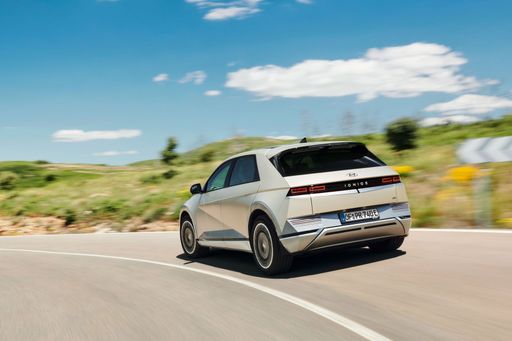 @ Hyundai Motor Company
@ Hyundai Motor Company
 @ Hyundai Motor Company
@ Hyundai Motor Company
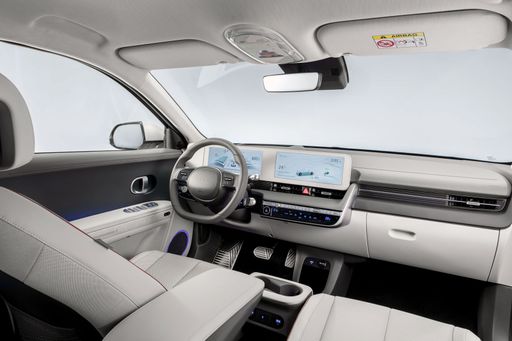 @ Hyundai Motor Company
@ Hyundai Motor Company
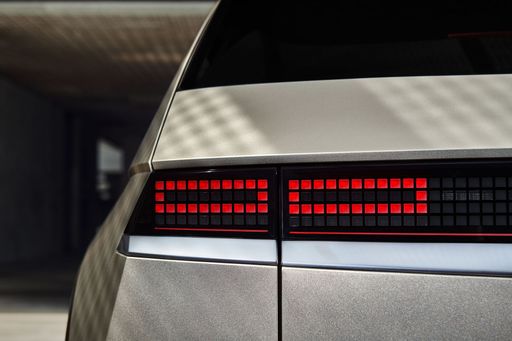 @ Hyundai Motor Company
@ Hyundai Motor Company
BYD Sealion 7
The Sealion 7 captivates with its striking design and impressive performance that appeals to both enthusiasts and casual drivers alike. With a focus on comfort and advanced technology, this model redefines the driving experience, making every journey enjoyable. Its sleek silhouette coupled with an innovative interior showcases the perfect blend of style and functionality.
details @ BYD Auto / BYD Global Media
@ BYD Auto / BYD Global Media
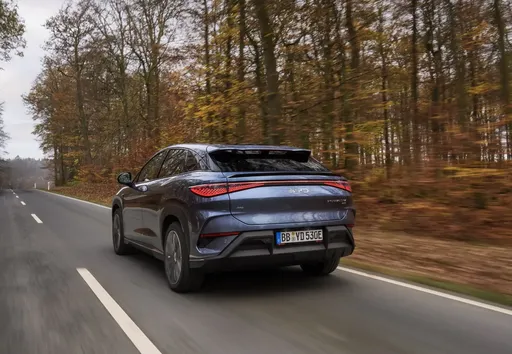 @ BYD Auto / BYD Global Media
@ BYD Auto / BYD Global Media
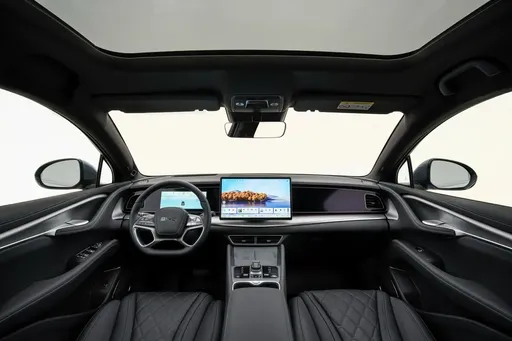 @ BYD Auto / BYD Global Media
@ BYD Auto / BYD Global Media
 @ Hyundai Motor Company
@ Hyundai Motor Company
|
 @ BYD Auto / BYD Global Media
@ BYD Auto / BYD Global Media
|
|
|
|
Costs and Consumption |
|
|---|---|
|
Price
38500 - 64200 £
|
Price
42800 - 52300 £
|
|
Consumption L/100km
-
|
Consumption L/100km
-
|
|
Consumption kWh/100km
15.6 - 21.2 kWh
|
Consumption kWh/100km
19.9 - 21.9 kWh
|
|
Electric Range
440 - 570 km
|
Electric Range
456 - 502 km
|
|
Battery Capacity
63 - 84 kWh
|
Battery Capacity
-
|
|
co2
0 g/km
|
co2
0 g/km
|
|
Fuel tank capacity
-
|
Fuel tank capacity
-
|
Dimensions and Body |
|
|---|---|
|
Body Type
SUV
|
Body Type
SUV
|
|
Seats
5
|
Seats
5
|
|
Doors
5
|
Doors
4
|
|
Curb weight
1955 - 2275 kg
|
Curb weight
2225 - 2435 kg
|
|
Trunk capacity
480 - 520 L
|
Trunk capacity
520 L
|
|
Length
4655 - 4715 mm
|
Length
4830 mm
|
|
Width
1890 - 1940 mm
|
Width
1925 mm
|
|
Height
1585 - 1605 mm
|
Height
1620 mm
|
|
Max trunk capacity
1540 - 1580 L
|
Max trunk capacity
1789 L
|
|
Payload
385 - 530 kg
|
Payload
410 kg
|
Engine and Performance |
|
|---|---|
|
Engine Type
Electric
|
Engine Type
Electric
|
|
Transmission
Automatic
|
Transmission
Automatic
|
|
Transmission Detail
Reduction Gearbox
|
Transmission Detail
Reduction Gearbox
|
|
Drive Type
Rear-Wheel Drive, All-Wheel Drive
|
Drive Type
Rear-Wheel Drive, All-Wheel Drive
|
|
Power HP
170 - 650 HP
|
Power HP
313 - 530 HP
|
|
Acceleration 0-100km/h
3.5 - 8.5 s
|
Acceleration 0-100km/h
4.5 - 6.7 s
|
|
Max Speed
185 - 260 km/h
|
Max Speed
215 km/h
|
|
Torque
350 - 770 Nm
|
Torque
380 - 690 Nm
|
|
Number of Cylinders
-
|
Number of Cylinders
-
|
|
Power kW
125 - 478 kW
|
Power kW
230 - 390 kW
|
|
Engine capacity
-
|
Engine capacity
-
|
General |
|
|---|---|
|
Model Year
2024 - 2025
|
Model Year
2024
|
|
CO2 Efficiency Class
A
|
CO2 Efficiency Class
A
|
|
Brand
Hyundai
|
Brand
BYD
|
What drive types are available for the Hyundai IONIQ 5?
The Hyundai IONIQ 5 is available as Rear-Wheel Drive or All-Wheel Drive.
The prices and data displayed are estimates based on German list prices and may vary by country. This information is not legally binding.
